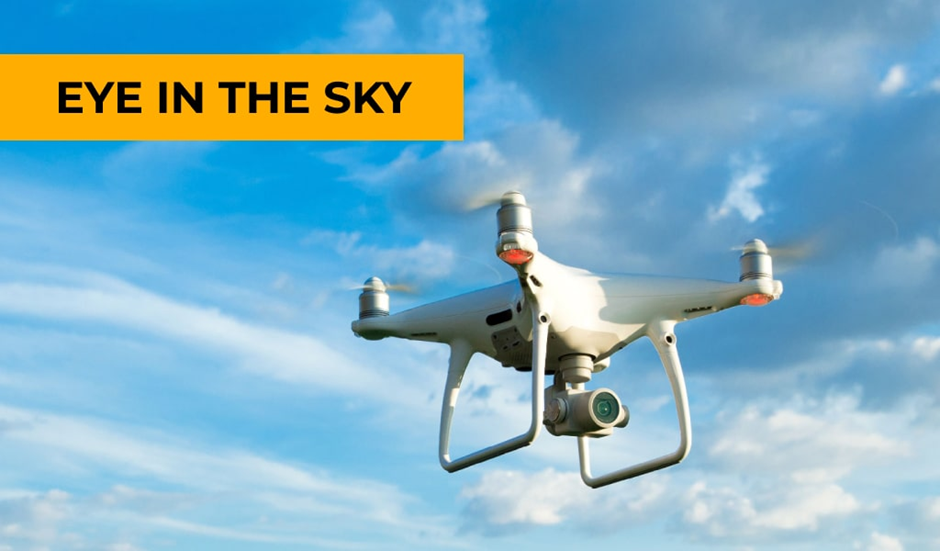
Introduction
Uganda is steadily emerging as one of East Africa’s more proactive nations in integrating modern technology into its aviation safety systems. In recent years, particularly since 2021, Uganda has increasingly embraced unmanned aerial vehicles (UAVs), or drones, as a cost-effective solution to longstanding airspace monitoring and security challenges. With growing concerns over illegal border crossings, airspace intrusions, and infrastructure surveillance, drones have offered Uganda a new vantage point to address these gaps. This article explores Uganda’s strategy in incorporating drones for airspace safety, the regulatory landscape, operational applications, challenges faced, and its regional implications.
Why Uganda Turned to Drones
Uganda’s airspace covers diverse terrain—from dense forests to sparsely populated borderlands—making ground-based monitoring both difficult and expensive. Additionally, the Uganda Civil Aviation Authority (UCAA) has limited radar coverage in certain parts of the country, particularly near the Democratic Republic of Congo and South Sudan borders. These factors, combined with increased interest in regional airspace security and civil aviation growth, prompted policymakers to explore UAVs as supplemental surveillance tools.
Drones offer Uganda enhanced visibility in areas that are otherwise difficult to monitor due to infrastructure limitations. Their low operating costs, high maneuverability, and capability to operate in varied environments have made them suitable for tasks ranging from runway inspections to border airspace patrolling.
Operational Applications in Airspace Monitoring
One of the key uses of drones in Uganda’s aviation ecosystem has been in monitoring restricted or sensitive airspace zones. For instance, in areas near military installations or vital economic infrastructure—like Entebbe International Airport—drones are employed to detect unauthorized aerial activity and monitor compliance with no-fly zones.
In 2023, Uganda began deploying drones along its western border to enhance surveillance against unauthorized aircraft crossings, particularly in regions where radar coverage is weak. This has helped authorities respond to potential airspace breaches faster and more efficiently.
Additionally, drones are used for aerial inspections of aviation infrastructure such as runways, navigation beacons, and perimeter fencing. This has improved the UCAA’s ability to assess the safety status of smaller domestic airports, some of which are in remote locations where regular inspections were infrequent due to logistical challenges.
Regulatory Framework and UCAA’s Role
Recognizing the rapid growth in UAV usage, the Uganda Civil Aviation Authority developed and enacted drone-specific regulations under the “Civil Aviation (Remotely Piloted Aircraft Systems) Regulations” in 2022. These rules govern drone registration, operator licensing, permissible altitudes, and airspace access protocols. The UCAA has also classified drones based on use (commercial, recreational, government/security), with distinct permissions required for each.
To support safety integration, the UCAA established a dedicated UAV oversight unit tasked with coordinating approvals, monitoring compliance, and enforcing penalties for violations. Through this framework, Uganda aims to avoid mid-air conflicts between manned and unmanned aircraft, a growing concern as drone operations expand.
Security Integration and Law Enforcement Support
Beyond civil aviation, UAVs have been adopted by Uganda’s security agencies for airspace surveillance and counter-smuggling operations. The Uganda People’s Defence Forces (UPDF) and national police use drones to patrol areas near conflict-prone borders and critical infrastructure. These operations have strengthened situational awareness and helped detect low-flying aircraft involved in illicit cross-border activities.
UAVs also support law enforcement in managing aerial threats during large public events, such as national celebrations or international conferences, where airspace violations pose security risks. In such scenarios, drones are deployed to monitor airspace integrity and provide real-time video feeds to security command centers.
Training and Capacity Building
With increased UAV deployment comes the need for trained operators and regulatory personnel. Uganda has responded by supporting training programs through aviation schools and military academies. Courses now include drone operations, airspace management, and safety protocols for RPAS (Remotely Piloted Aircraft Systems).
International partners, including ICAO and the African Civil Aviation Commission (AFCAC), have supported these efforts by offering technical guidance and facilitating regional workshops hosted in Kampala. These programs aim to harmonize drone safety practices across East Africa and strengthen regulatory enforcement.
Challenges in UAV Integration
Despite the progress, Uganda faces several challenges in fully leveraging UAVs for airspace safety. First, the cost of acquiring and maintaining high-quality surveillance drones remains a constraint. While basic drones are affordable, those with longer flight ranges, night-vision capabilities, or high-resolution imaging systems are significantly more expensive.
Second, there are ongoing concerns about privacy and unauthorized drone use. Incidents of unregistered drones flying over sensitive areas—such as government compounds or wildlife reserves—have raised alarms. The UCAA continues to refine its enforcement protocols to address rogue operations, but gaps persist, especially in remote regions.
Third, data management and coordination between agencies can be fragmented. Information collected by drones may not always be effectively shared between civil aviation, security forces, and airport operators, leading to inefficiencies in response and oversight.
Regional Implications and Cross-Border Cooperation
Uganda’s growing reliance on drone technology sets a precedent for neighboring countries grappling with similar surveillance gaps. In forums such as the East African Community’s Civil Aviation Safety and Security Oversight Agency (CASSOA), Uganda has shared its UAV regulatory framework as a model for harmonized drone operations across the region.
There is growing interest in joint drone monitoring projects along shared borders, particularly with Rwanda and Kenya, to enhance real-time situational awareness. Additionally, discussions have been held on establishing a regional drone traffic management (UTM) system to coordinate UAV activities near international boundaries.
Conclusion
Uganda’s integration of drone technology into its airspace monitoring strategy marks a significant step forward in addressing long-standing aviation safety challenges. By combining technology with regulatory foresight, the country is setting a benchmark for pragmatic innovation in airspace security. While issues such as cost, coordination, and unauthorized use remain, continued investment in training, infrastructure, and regional partnerships will be vital. As UAV systems become more sophisticated and widespread, Uganda’s experience offers valuable lessons for other East African states striving to modernize their aviation oversight.


